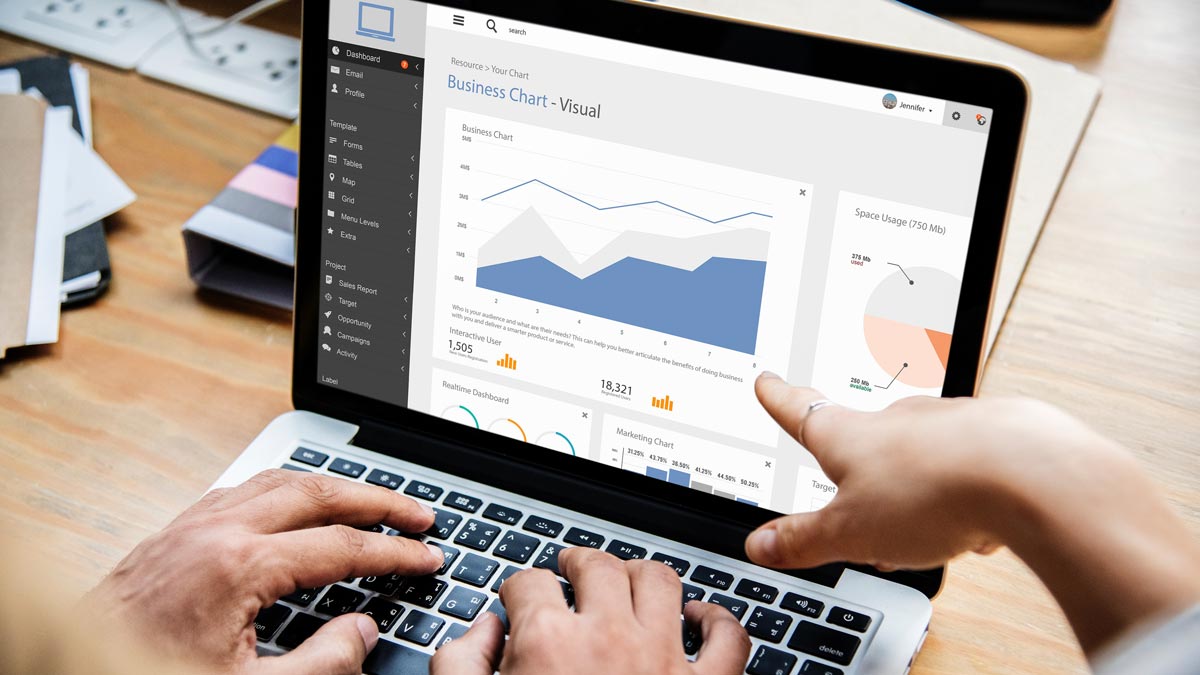5 of the easiest ways to make data an integral part of your business’ digital marketing

“What gets measured gets managed” is an old saying that’s stuck around for one reason — it’s true.
Data is essential to every digital marketer. Gone are the days of putting up a billboard and hoping for customers. Now we can measure to a degree our ancestors would have never dreamed of. And that measurement allows us to create more targeted campaigns and know whether or not they worked.
We can put the right message in front of the right person at the right time. But to do that effectively, we need to incorporate data at every level of our marketing. Thankfully, it’s easier than you think.
1. Use Google Analytics
There’s a reason everybody uses Google Analytics. It’s the most ubiquitous analytics platform out there. You can get a ton of information for free. You can generate custom reports and push them to people in your organization. It’s an essential part of just about any business — which is why roughly 28 million sites use it.
You probably already have GA turned on, but if you don’t, it’s easy. Go to the Google Analytics page and sign up, then add a property (a website you own) and a reporting view. Follow the instructions to add the tracking code to the site.
Google’s tool will feed you real-time information about where your visitors are coming from, how much time they spend on your site and where they visit while they’re there. It’s incredibly useful. And while analytics can be intimidating, Google has many free courses designed to help you get the most out of your GA account.
2. Track your social media engagement
Social media is one of the most powerful tools at your disposal for spreading a message. You need to stay on top of your tracking to get the most out of it, though. And that means getting beyond just the basics.
One of the most important metrics you can measure is something called “amplification rate.” To get your amplification rate for a post, add all the shares that post received, then divide by your number of followers. Multiply the result by 100 to get the amplification rate percentage — basically, the percentage of your followers who are interested in sharing what you have to say.
There are several other important advanced stats for social media if you want to get beyond the basics, but the amplification rate is a good start. Start tracking your posts regularly and tailor your feed to what people care about.
3. Harness demographic data for your PPC
Pay-per-click advertising is great for drawing new eyeballs to your page. However, it’s easy to spend a lot of money for a little result. Narrowing down your PPC to only the people that will be interested is the key.
Take a look at the demographic data for your field. Are you targeting geographic areas or market segments you shouldn’t? And on the other hand, are you missing out on hot areas you could get great results from?
Think of this as an example. You sell homeowner’s insurance in a particular city. You set up a PPC campaign aimed at that city. It underperforms. You decide to take a closer look at the demographic data and realize that a large chunk of the area you’re covering is populated by renters.
You can now narrow that audience to just the areas that have an interest in what you have to offer. Don’t use a shotgun approach. Be precise. Use demographic data and common sense to decide where to put your focus.
4. Make personas of your customers
You’re probably sitting on a gold mine of data in your customer database. Customer personas and segmentation are key to targeted marketing campaigns, and you have the information to do it. Use tools like Facebook Audience Insights and Google Analytics to compile information on things like age, income level and interests. Marry that with your in-house customer data.
“Segmentation is one of the most important tools we have,” says Ohad Ben-Artzi, co-founder of marketing and PR firm Vidliz. “Marketing is all about putting the right message in the right people’s hands. You can’t do that if you don’t know who they are. Personas explain who you’re talking to tangibly. That lets you create the right language, design and targeting.”
You probably have a decent idea already, but you might be surprised what you turn up when you dig into the data. Take Pedialyte, for example. Pedialyte was marketed to parents of small children for years, but they discovered drinkers were using it as a hangover cure. Adult sales at the time of their pivot were up 57 percent since 2012. In 2015 they decided to go after that market — to great effect. They knew who their audience was — and so can you.
5. Choose your channels carefully
Copyblogger made waves back in 2014 when they killed their Facebook page. The well-known content marketing site had tried several content initiatives and concluded that its audience was elsewhere.
Now — they have a page today, and most brands will never do anything nearly that drastic. But the move highlights an important truth — you have limited time and resources. Going after every channel is almost as bad as not going after any.
A company selling motorized wheelchairs is probably not going to find much success on TikTok, where only 11 percent of users are over 50. Why spend the resources? Research your channels. Find out where your preferred audience spends their time.
It’s easy to get started with marketing analytics, and you have to take advantage. Don’t get left behind.
___
by Lucas Miller
source: Entrepreneur

